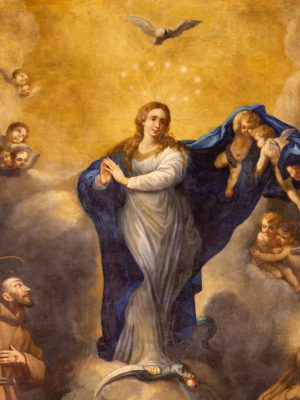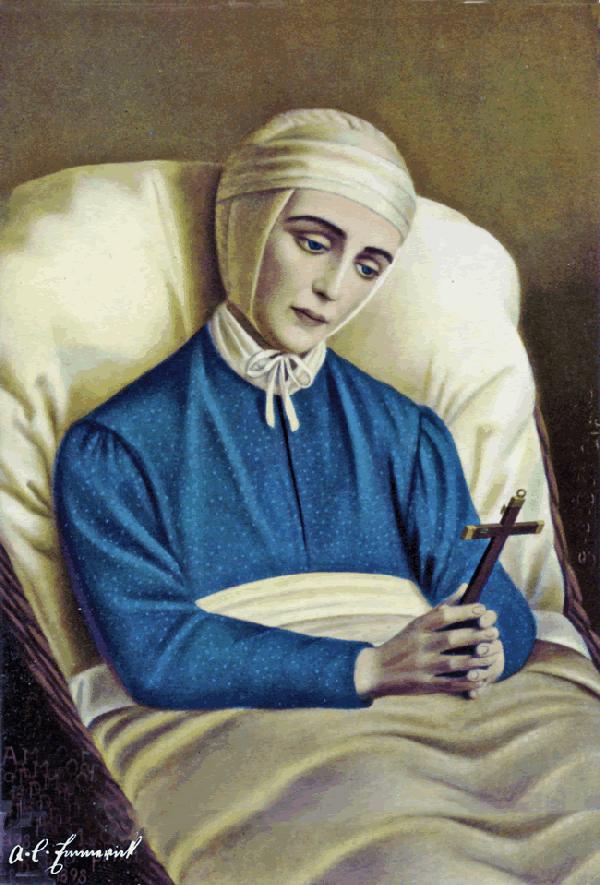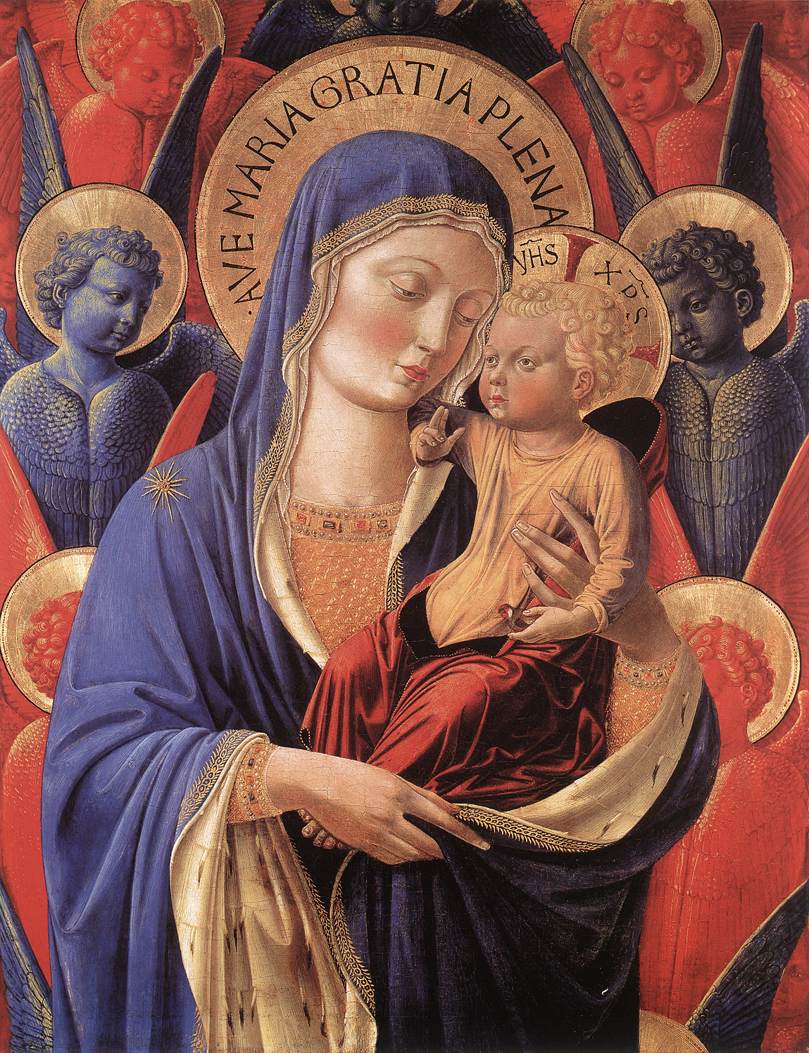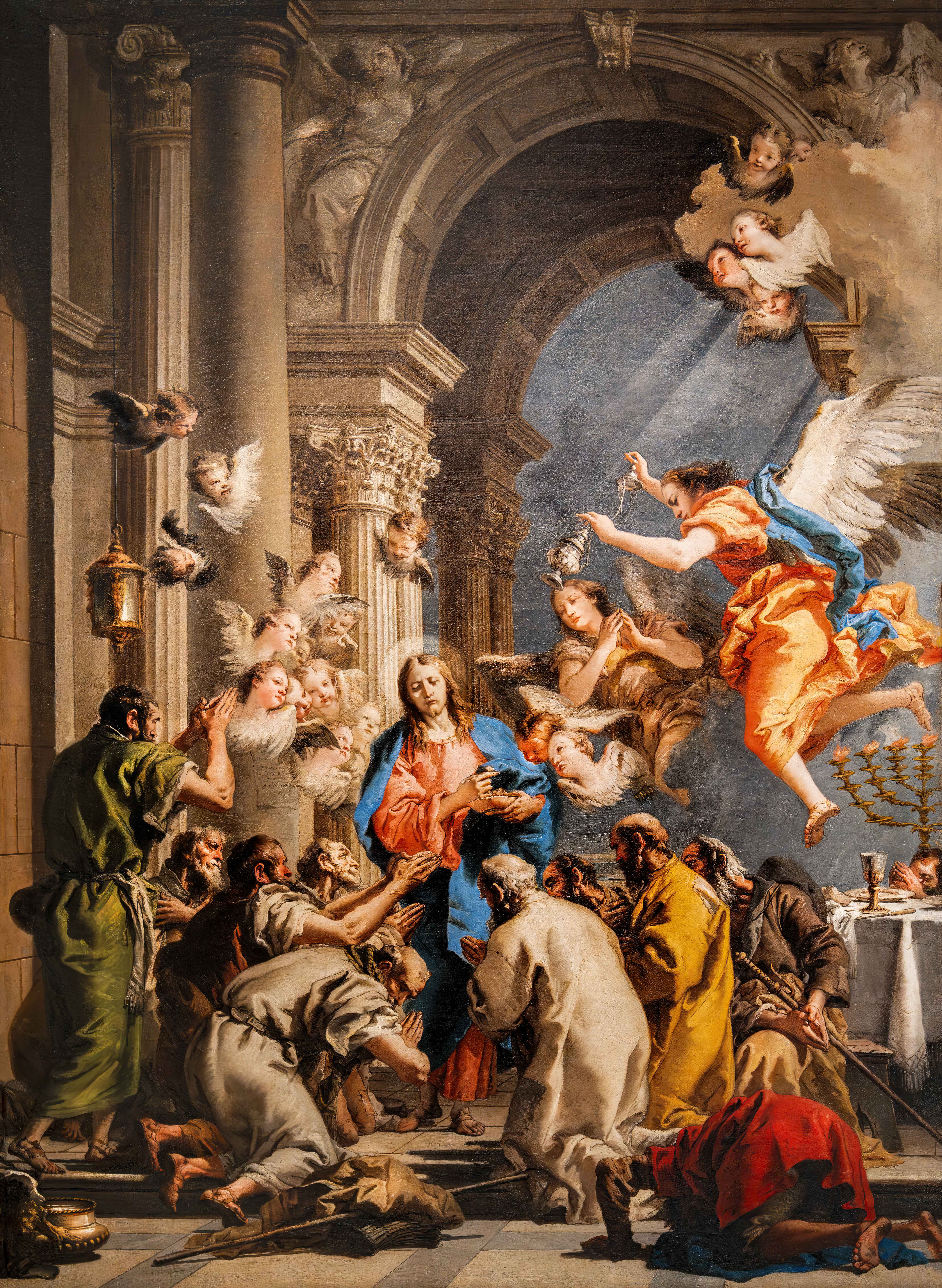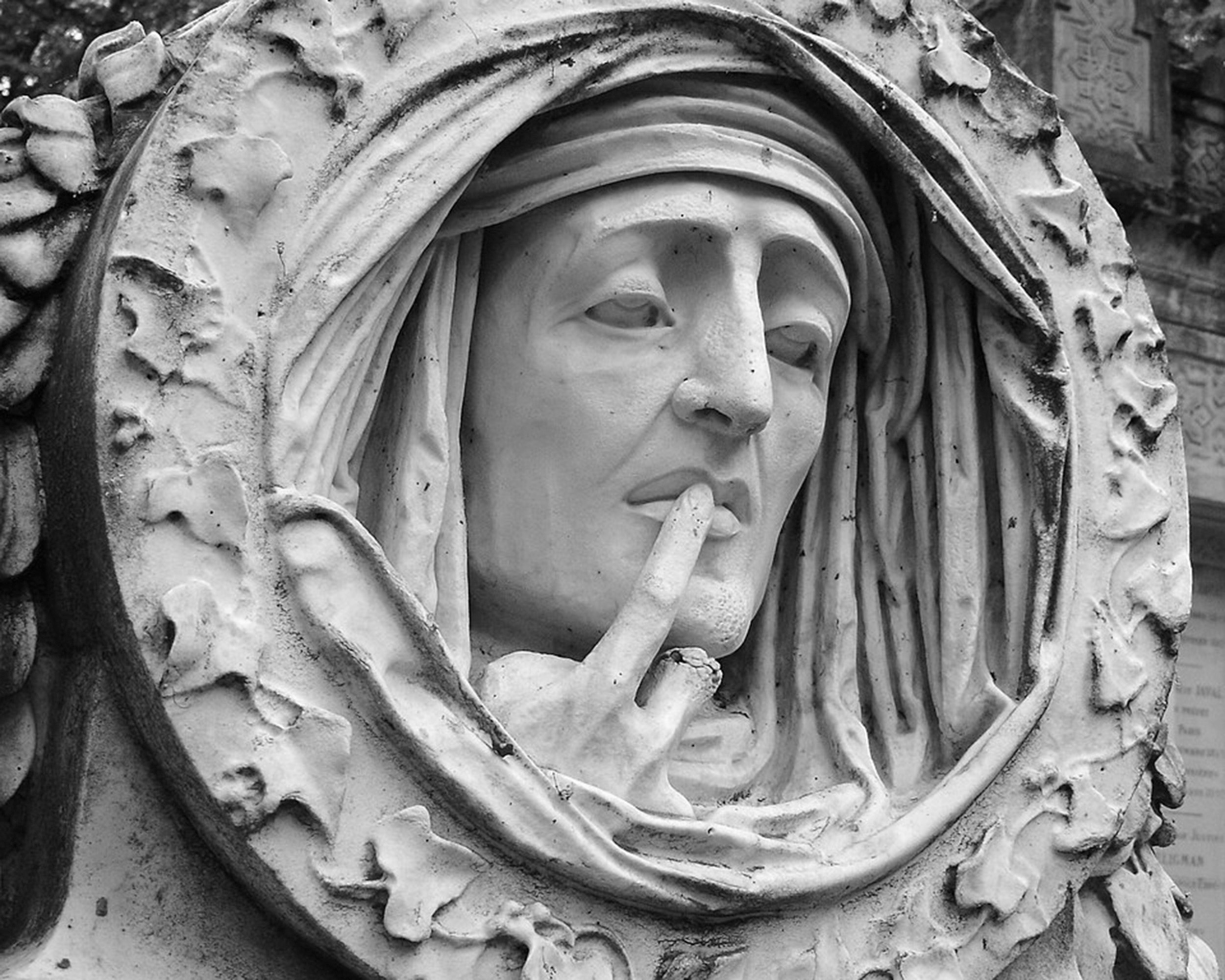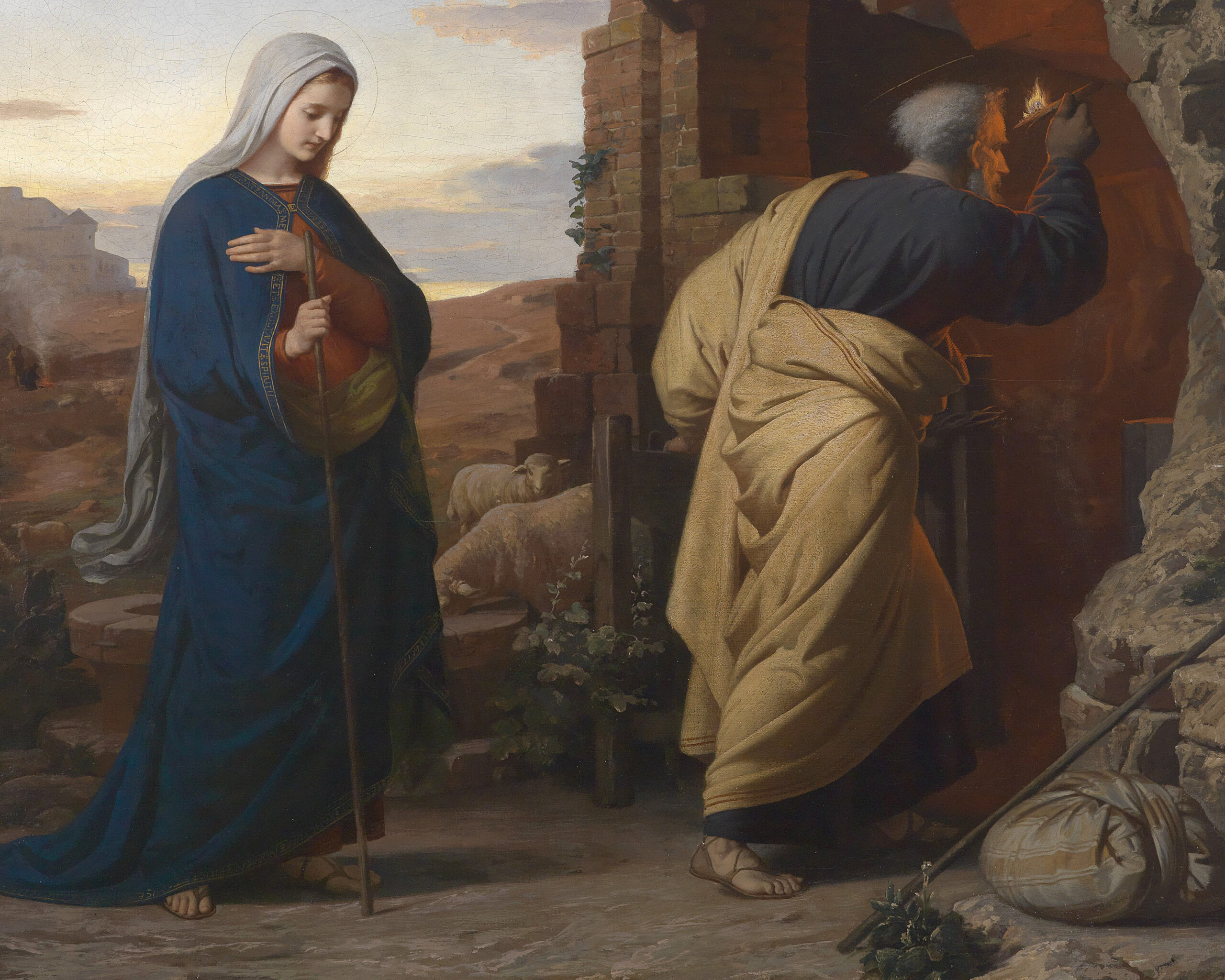“In the moment when the newborn child [Mary] lay in the arms of her holy mother Anna, I saw that at the same time the child was presented in Heaven in the sight of the Most Holy Trinity, and greeted with unspeakable joy by all the heavenly host.”
—Blessed Anne Catherine Emmerich
Anne Catherine Emmerich (1774–1824) was an Augustinian nun who for many years is said to have experienced mystic visions from heaven, while leading a quiet and yet extraordinary life. She had little education, and due to ill health, was confined to her bed for much of her life.
For many years, it is reported, she lived almost entirely on water and the Blessed Eucharist. Through mystical visions, she had a gift for seeing events of the past, present, and future. From the year 1812 until her death, she bore the stigmata of the passion of Our Blessed Lord.
In 2004 she was beatified in the Vatican by Pope John Paul II.
In The Life of the Blessed Virgin Mary, a TAN Books classic, there is a fascinating section narrated by Anne Catherine (chapter 2) on the Immaculate Conception and the birth of Our Lady. This chapter follows after a fascinating section on Our Lady’s ancestors described in chapter 1.
The theological insight revealed here is powerful. That Mary, the one whom God has chosen to become the Mother of the Word of God made flesh, is herself in the most perfect way redeemed.
In the words of the Benedictine theologian Fr. Damsus Winzen, O.S.B.: “Through her Immaculate Conception Mary is truly ‘full of grace’ because God by preserving her from the stain of original sin loved her first, possessed her in the beginning of His ways, made His grace the very root of her being and endowed her with the full beauty of the new life of redemption.”
Below is a sample of chapter 2, providing an incredible first-person account of the conception and birth of Mary by Anne Catherine Emmerich. Although this text falls in the realm of private revelation, it nevertheless provides a fascinating opportunity for meditation and reflection during the Advent season.
The selected text reads thus:
“I had a vision of the creation of Mary’s most holy soul and of its being united to her most pure body.
In the glory by which the Most Holy Trinity is usually represented in my visions I saw a movement like a great shining mountain, and yet also like a human figure; and I saw something rise out of the midst of this figure towards its mouth and go forth from it like a shinning brightness.
Then I saw this brightness standing separate before the Face of God, turning and shaping itself—or rather being shaped, for I saw that while this brightness took human form, yet it was by the Will of God that it received a form so unspeakably beautiful.
I saw, too, that God showed the beauty of this soul to the angels, and that they had unspeakable joy in its beauty. I am unable to describe in words all that I saw and understood.
When seventeen weeks and five days after the conception of the Blessed Virgin had gone by (that is to say, five days before Anna’s pregnancy was half accomplished), I saw Our Lady’s holy mother lying asleep in her bed in her house near Nazareth.
Then there came a shining light above her, and a ray from this light fell upon the middle of her side, and the light passed into her in the shape of a little shining human figure.
In the same instant I saw Our Lady’s holy mother raise herself on her couch surrounded by light. She was in ecstasy, and had a vision of her womb opening like a tabernacle to enclose a shining little virgin from whom man’s whole salvation was to spring.
I saw that this was the instant in which for the first time the child moved within her. Anna then rose from her couch, dressed herself, and announced her joy to the holy Joachim. They both thanked God, and I saw them praying under the tree in the garden where the angel had comforted Anna.
It was made known to me that the Blessed Virgin’s soul was united to her body five days earlier than with other children, and that her birth was twelve days earlier.
Several days before Our Lady’s birth Anna had told Joachim that the time was approaching for her to be delivered.
She sent messengers to Sephoris, where her younger sister Maraha lived: to the widow Enue (sister of Elisabeth) in the valley of Zabulon; and to her niece Mary Salome at Bethsaida; asking these three women to come to her.
I saw them on their journeys. The widow Enue had a serving-lad with her; the other two women were accompanied by their husbands who, however, went back on approaching Nazareth.
I saw that on the day before Anna was delivered Joachim sent his many manservants out to the herds, and among Anna’s new maidservants he kept in the house only those who were needed.
He, too, went out into his nearest pasture. I saw that Anna’s firstborn daughter, Mary Heli, looked after the house. She was then about nineteen years old and was married to Cleophas, one of Joachim’s chief shepherds, by whom she had a little daughter, Mary Cleophas, now about four years old.
After praying, Joachim chose out his finest lambs, kids, and cattle, sending shepherds to take them to the Temple as a thank-offering. He did not return home until nightfall.
I saw the three cousins arriving at Anna’s house in the evening. They went to her in her room behind the hearth and embraced her. After Anna had told them that the time was near for her to be delivered, they stood up and sang a hymn together: ‘Praise the Lord God; He has shown mercy to His people and has redeemed Israel and has fulfilled the promise which He gave to Adam in Paradise that the seed of the woman should crush the head of the serpent,’ and so on.
I can no longer recite it all by heart. Anna prayed as though in ecstasy. She introduced into the hymn all the prophetic symbols of Mary. She said: ‘The seed given by God to Abraham has ripened in me.’
She spoke of the promise to Sara of Isaac’s birth and said: ‘The blossoming of Aaron’s rod is perfected in me.’ At that moment I saw her as though suffused with light; I saw the room full of radiance, and Jacob’s ladder appearing above it.
The women were overcome with astonishment and joy, and I think that they also saw the vision. When the prayer of welcome was over, the travelers were refreshed with a slight meal of bread and fruit, and water mixed with balsam.
They ate and drank standing up, and then lay down till midnight to rest from their journey. Anna did not go to bed, but prayed, and at midnight woke the other women to pray with her. They followed her to her praying-place behind a curtain.
Anna opened the doors of a little cupboard in the wall which contained a casket with holy objects. On each side were lights—perhaps lamps, but I am not sure. They had to be pushed up in their holders, and then little bits of shavings put underneath to prevent them from sinking down.
After this the lights were lit. There was a cushioned stool at the foot of this sort of little altar. The casket contained some of Sara’s hair (Anna had a great veneration for her), some of Joseph’s bones (brought by Moses from Egypt), and something belonging to Tobias, I think a relic of his clothing, also the little shining, white, pear-shaped goblet from which Abraham had drunk when blessed by the angel. (This had been give to Joachim from the Ark of the Covenant when he was blessed in the Temple. I now know that this blessing took the form of wine and bread and was a strengthening and sacramental food.)
Ana knelt before the little cupboard with one of the women on each side and the third behind her. She recited another hymn; I think it mentioned the burning bush of Moses. Then I saw the room filled with supernatural light which became more intense as it wove itself round Anna.
The women sank to the ground as though stunned. The light round Anna took the exact form of the burning bush of Moses on Horeb, and I could no longer see her. The whole flame streamed inwards; and then I suddenly saw that Anna received the shining child Mary in her hands, wrapped her in her mantle, pressed her to her heart, and laid her naked on the stool in front of the holy relics, still continuing her prayer.
Then I heard the child cry, and saw that Anna brought our wrappings from under the great veil which enveloped her. She wrapped the child first in grey and then in red swaddling-bands up to her arms; her breast, arms, and head were bare. The appearance of the burning bush around Anna had now vanished.
The women stood up and received the newborn child in their arms with great astonishment. They shed tears of joy. They all joined in a hymn of praise, and Anna lifted her child up on high as though making an offering. I saw at that moment the room full of light, and beheld several angels singing Gloria and Alleluia. I heard all their words. They announced that on the twentieth day the child was to be called Mary.”
Source: Anne Catherine Emmerich, The Life of the Blessed Virgin Mary: From the Visions of Ven Anne Catherine Emmerich
(TAN Books, 2011), pp. 72–75.



